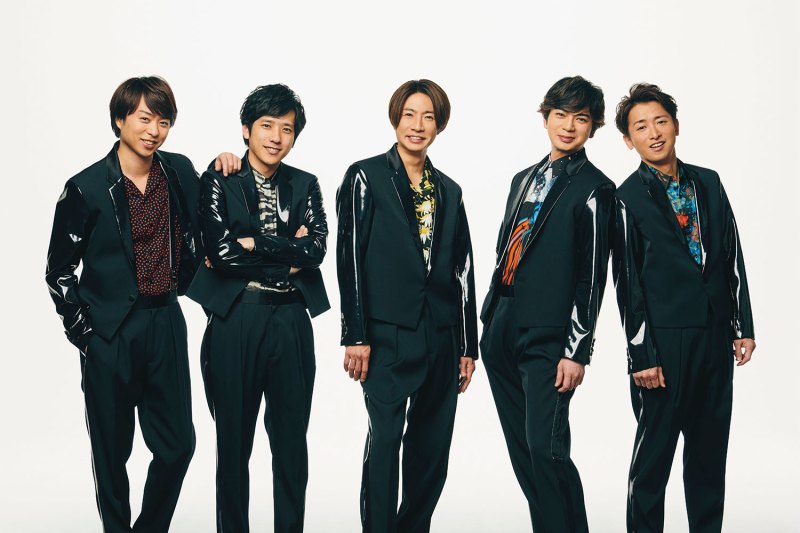It’s pretty likely you’ve never heard of the most popular band on the planet right now. The act is fittingly called Arashi, Japanese for “force of a storm.”
Since the band was founded in the late 90s it has put together an immensely impressive discography of sheer pop force. Last year, Arashi’s Best-Of collection was released, an album spanning the band’s full resume. It outsold even Taylor Swift, making it the best-selling album of 2019.
The stats are mind-blowing: Arashi has sold more than 41 million records and performed for some 14 million people. The quintet has commanded the uber-popular J-pop scene for decades, not just in its native Japan but worldwide. And, again, you probably can’t name a single Arashi hit.
Related Reading
Something like the Japanese version of N’Sync, Arashi formed on American soil (well, waters anyway) in 1999. That’s when members Ohno Satoshi, Sakurai Sho, Aiba Masaki, Ninomiya Kazunari, and Matsumoto Jun decided to call themselves a musical group while on a cruise ship off the Honolulu coast. The band’s eponymous single officially debuted and it was picked up as the theme song for the men’s volleyball World Cup later that year, hosted by Japan.

Arashi turned out singles like Typhoon Generation and embarked on extensive national tours. In 2001, the band switched record labels and began seeing some of its music featured in Japanese dramas and anime series. The pace was far from blistering but certainly successful. In the mid-2000s, Arashi was offering just two singles per year on average, but they almost always topped the charts.
Less than a decade into its career, Arashi was already one of Japan’s most adored acts, if not one of the entire continent’s. Member Matsumoto Jun devised a transparent mobile stage for the band to perform on as it sailed over throngs of screaming fans. It wasn’t quite yet Beatlemania for the J-pop stars, but it was getting there. When not performing on the musical stage, Arashi featured in manga, or Japanese graphic novels.
Arashi’s sonic waves grew in size and volume. The year 2006 saw the band’s work sold elsewhere, in such nations as Hong Kong and South Korea. In the latter, the group’s newest LP Arashi sold 10,000 copies its first day on the market. Along came festival headlining bills, broader tours, and scores of press conferences.
Arenas were no longer big enough to contain the quintet. Arashi started playing venues like the National Olympic Stadium in Tokyo, which holds 48,000 people. Musically, the band pivoted some with its release of Dream “A” Live, its eighth full-length studio release. The record attracted more male listeners thanks to perhaps a bit more in the way of jumpy guitar and rock. Still built around the pop and catchy new R&B the band had become known purveyors of, the album deviated just enough to broaden its audience. Prior to that, Arashi was mainly pulling on the ears of teenage girls.
Ten years as a band and Arashi had become a global force. The musicians were endorsing major products and showing up routinely in all kinds of media. Arashi’s sound had been fine-tuned into a product of mass appeal. It mixed boy band antics, feel-good bubble gum pop, plenty of vocal harmonies and the occasional rap (sung in Japanese as well as English), and a backdrop of sounds seemingly pulled straight from video games.
The next ten years were much the same, with even greater success and a wider, raucous following. Arashi practically became a house band for some of Asia’s largest arenas, playing them annually, if not more often.
While music halts its regular ways like most things mid-pandemic, Arashi continues to build its legion online. Presently, the band has well over one million monthly Spotify followers, a massive YouTube presence, and countless forums, mentions, hashtags, etc. The band is the subject of a 26-episode Netflix documentary and has been streamed almost 360 million times since November of 2019, when the streaming services gained access.
Still at it despite retirement rumors at play, Arashi just released yet another single. Dubbed In the Summer, the track weaves together dance, electronica, house, and anthemic pop. It’s a catchy love song that millions of people will likely turn to to celebrate a relationship, blast amid a breakup, or simply use as an escape pod to flee, if only mentally and for a few minutes, from the pandemic.
With more than twenty years under its belt, Arashi remains a real pop force, despite relatively little fanfare stateside. It’s an interesting phenomenon in a planet increasingly shrunken by technology and the internet.


